The ancient Indian text, the Vaisheshika sutra of Kanada, has fascinated scholars for centuries with its profound insights into the nature of physical reality and consciousness. In this comprehensive exploration, we delve into the teachings of this 2,500-year-old philosophical masterpiece, as interpreted and translated by Professor Subhash Kak. With expertise spanning quantum computing, information theory, and the history of science, Professor Kak reveals how the Vaisheshika sutra not only anticipated many modern scientific concepts but also offers timeless wisdom on the relationship between matter and mind.
Table of Contents
- Introduction to the Vaisheshika Sutra and Its Relevance Today
- Foundational Concepts: Prakriti, Guna, Karma, and Dravya
- Ancient Laws of Motion and Principles of Reality
- The Five Mahabhutas: The Building Blocks of Matter
- Time, Space, and Dimensions in Vaisheshika Philosophy
- Consciousness and the Inner Universe
- Symbolism of Shiva and the Dance of Consciousness
- Samudra Manthan: The Churning of the Ocean and the Quest for Immortality
- Conclusion: The Timeless Wisdom of the Vaisheshika Sutra
- Frequently Asked Questions (FAQ)
Introduction to the Vaisheshika Sutra and Its Relevance Today
The Vaisheshika sutra is an ancient Indian text attributed to the sage Kanada, dated approximately 500 to 600 BCE. Despite its age, its content remains astonishingly relevant to contemporary physics and philosophy. Professor Subhash Kak, who translated the sutras seven years ago, emphasizes that the insights contained within are not merely historical curiosities but offer practical value in understanding ongoing challenges in science.
This sutra stands out as a rare example of a classical Indian scientific text that addresses the physical universe and the role of the observer, or the mind, in perceiving reality. Unlike many ancient texts dismissed as purely spiritual or religious, the Vaisheshika sutra is deeply scientific, explaining the nature of matter, motion, and consciousness in a unified framework.
Professor Kak highlights that this work remains neglected in Indian academic circles, yet it is essential reading for anyone interested in the intersection of physics, philosophy, and consciousness studies. The sutra is written in Sanskrit, the root of many Indian languages, making its study accessible to a broad audience familiar with regional tongues.
Foundational Concepts: Prakriti, Guna, Karma, and Dravya
At the heart of the Vaisheshika sutra lies the concept of Prakriti, or nature, which describes the physical reality around us. According to the sutra, Prakriti is fully characterized by three fundamental aspects:
- Dravya (Substance): The tangible substances that make up the universe.
- Guna (Properties): The qualities or attributes that substances possess.
- Karma (Motion): The movement or activity inherent in substances.
These categories comprehensively describe the cosmos, from atoms to galaxies, emphasizing that all physical phenomena are governed by laws of motion and properties intrinsic to matter. This classification is strikingly aligned with modern physics, where matter is understood through its physical properties and dynamics.
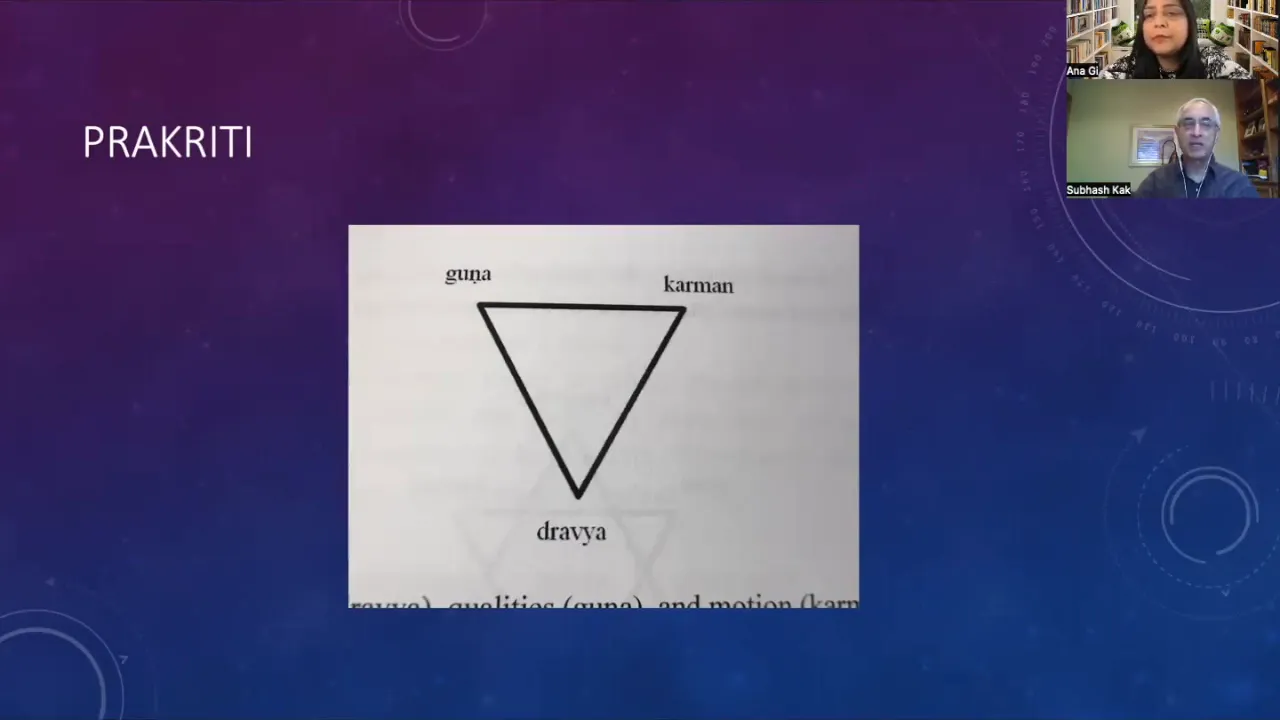
It is essential to distinguish the term guna in this context from the more commonly known three gunas of sattva, rajas, and tamas, which relate to the qualities of the mind and body in Ayurvedic and philosophical traditions. Here, gunas refer to the specific physical properties of substances, not mental qualities.
Interestingly, the sutra also connects the three mental gunas with three goddesses: Saraswati (sattva), Lakshmi (rajas), and Durga (tamas), symbolizing different aspects of consciousness and human experience.
The Observer and the Inner Triangle: Samaniya, Vishesh, and Samavaya
While the first triangle of Prakriti deals with the external physical world, the sutra also describes an inner triangle related to the observer or Purush (consciousness). This inner triangle consists of:
- Samaniya (Universal properties): Attributes that appear the same to all observers.
- Vishesh (Specific properties): Unique properties perceived depending on the observer’s location and relation to the universe.
- Samavaya (Inherence or connection): The fundamental linkage between the observer and the observed reality.
This framework anticipates modern quantum mechanics, where the observer’s interaction with a system determines the specific reality experienced, highlighting a profound unity between the external world and consciousness.
Ancient Laws of Motion and Principles of Reality
One of the most remarkable aspects of the Vaisheshika sutra is its articulation of laws of motion and fundamental principles that closely parallel Newton’s laws, yet predate Newton by over two millennia.
General Principles
- Karma Karma: From existing motion, new motion does not arise spontaneously. An object in motion remains in motion unless acted upon.
- Absence of Cause Means Absence of Motion: Without an external cause (force), an object remains at rest.
- Samaniya Vishesh: The distinction between universal and particular properties arises from the mind.
- Existence Is Self-Defined: Substance and motion are potentialities emerging from existence itself, which is uncaused and eternal.
These principles emphasize clarity and order in the universe, laying a foundation for understanding physical phenomena as governed by natural laws.
Vaisheshika’s Laws of Motion
- Gravity and Falling: In the absence of conjunction (contact), gravity causes objects to fall (Gurutva Patanam).
- Force and Motion: Without the application of force, no motion occurs in any direction, whether upward, sideways, or otherwise.
- Action and Reaction: Every action has an equal and opposite reaction, a principle nearly identical to Newton’s third law of motion.
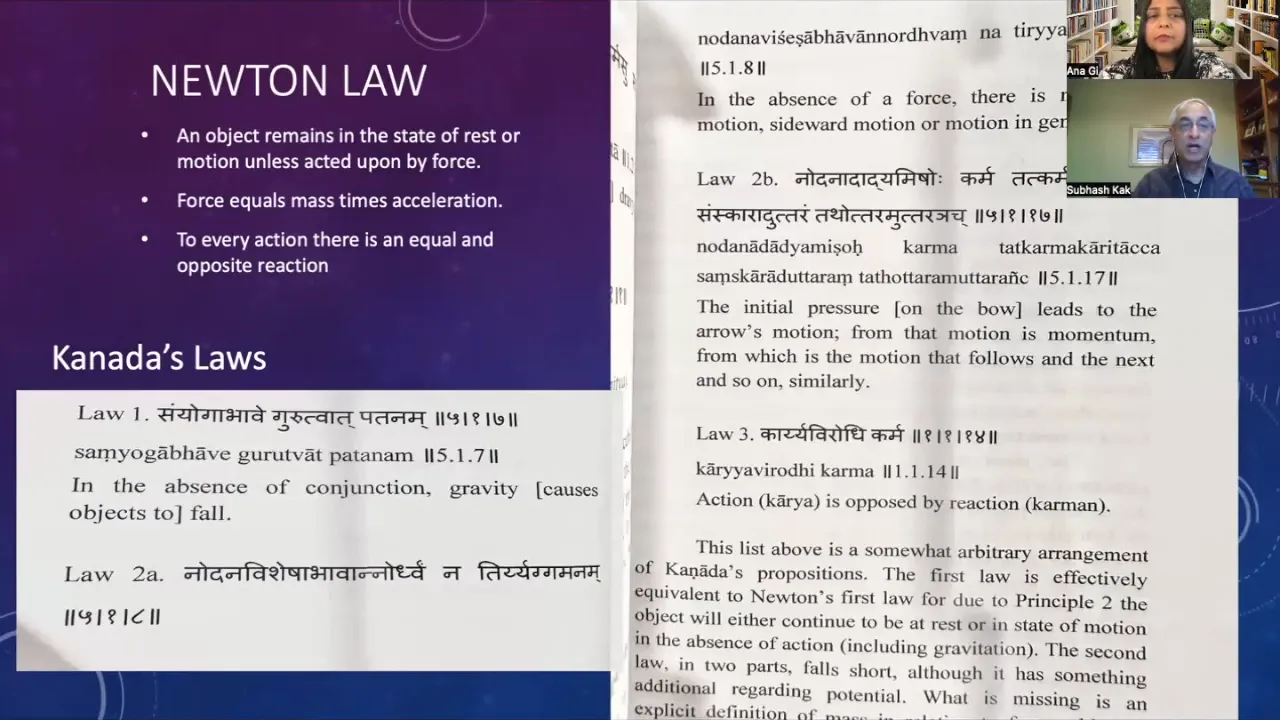
This ancient understanding reflects a sophisticated grasp of mechanics, with philosophical depth regarding cause and effect.
The Five Mahabhutas: The Building Blocks of Matter
Kanada’s sutras also introduce the concept of the Mahabhutas, or five great elements, which form the basis of all matter:
- Prithvi (Earth): Represents solidity or substance.
- Apas (Water): Represents fluidity or liquidity.
- Tejas (Fire): Represents energy, especially electromagnetic energy.
- Vayu (Air): Represents movement and loss of matter (decay).
- Akasha (Ether/Space): Represents the continuous, non-atomic space.
Contrary to the simplistic identification of these elements with physical earth, water, fire, air, and space, Kanada’s interpretation is more nuanced and scientific. For example, the element of water corresponds to the liquidity in matter, an attribute hidden within substances that becomes apparent under certain conditions, such as heating gold to melt it.
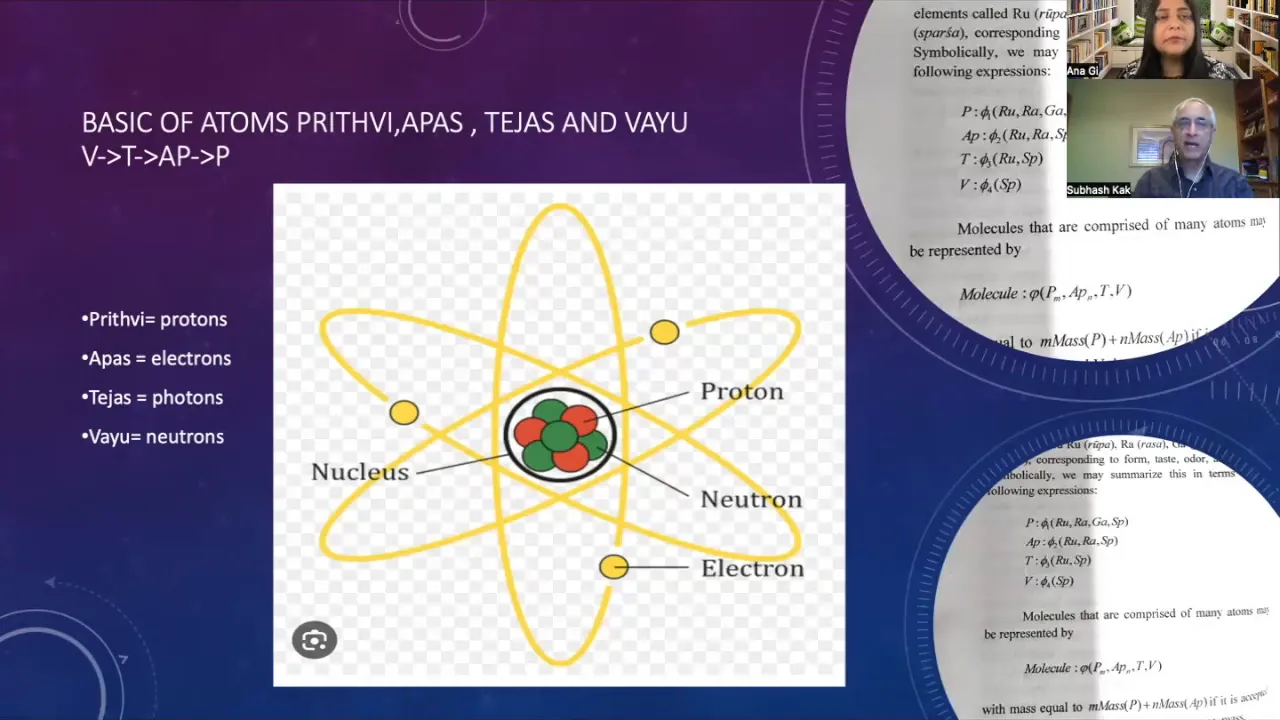
Similarly, fire is equated with electromagnetic energy, such as light, while air is linked to processes that cause decay, akin to the neutrino particle in modern physics, which contributes to radioactive decay.
These elements combine in various ways to form atoms (Anu) and molecules, explaining the diversity of matter in the universe.
Time, Space, and Dimensions in Vaisheshika Philosophy
Kanada’s treatment of dik (direction) and kala (time) introduces a sophisticated understanding of space and time, which remains relevant to modern science.
While classical physics assumes space is three-dimensional, Kanada suggests that this three-dimensionality is an assumption of the mind, not an intrinsic property of reality. The element Akasha is continuous and not atomic, hinting at a more complex structure of space.
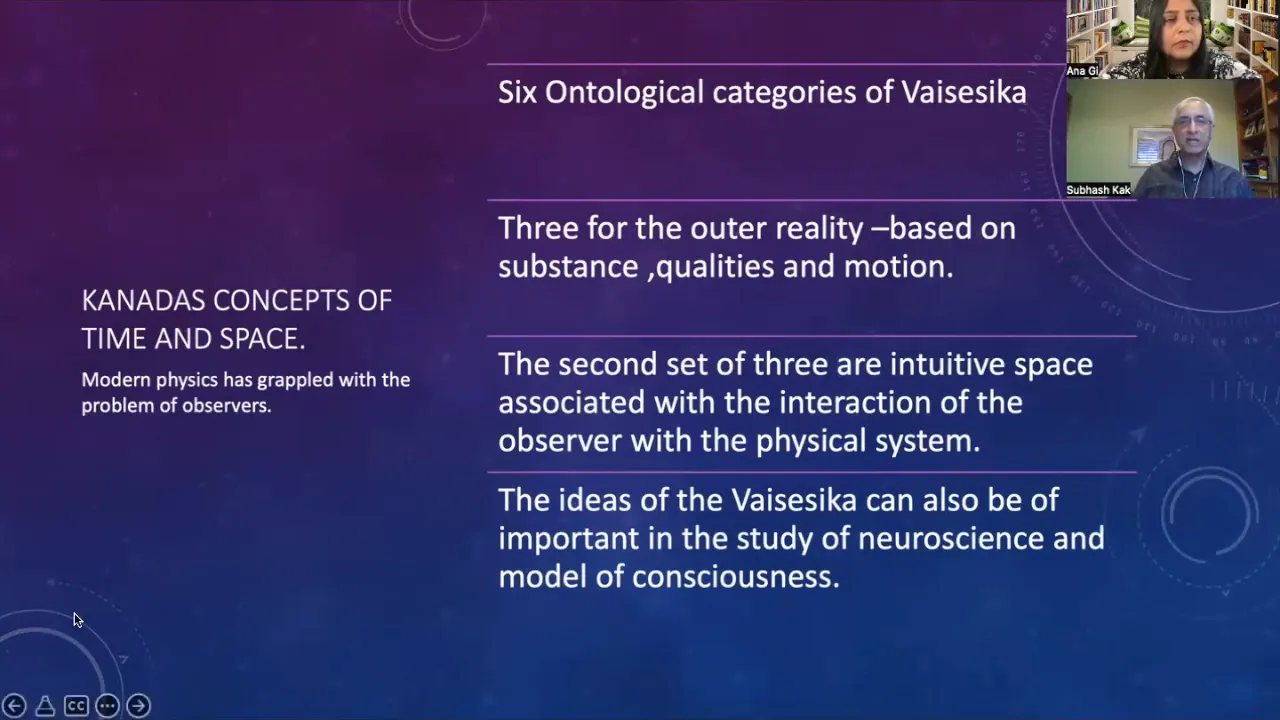
Modern scientific theories, including relativity and string theory, have proposed additional dimensions beyond the familiar three of space and one of time. Professor Kak highlights recent mathematical work suggesting that space might be fractal or e-dimensional (approximately 2.718 dimensions), which is optimal for physical reality and has implications for gravitation, neuroscience, and even genetics.
This insight aligns with the Vaisheshika view that the universe’s structure is more subtle than classical assumptions suggest, opening new avenues for scientific and philosophical exploration.
Consciousness and the Inner Universe
The Vaisheshika sutra does not limit itself to the external universe; it also deeply explores the nature of consciousness or Purush. The sutra emphasizes the equivalence and interconnectedness of the outer physical world and the inner world of consciousness.
This duality is essential to understanding how humans perceive and interact with reality. Consciousness is viewed as the light illuminating the inner space, allowing observers to make sense of the vast cosmos.
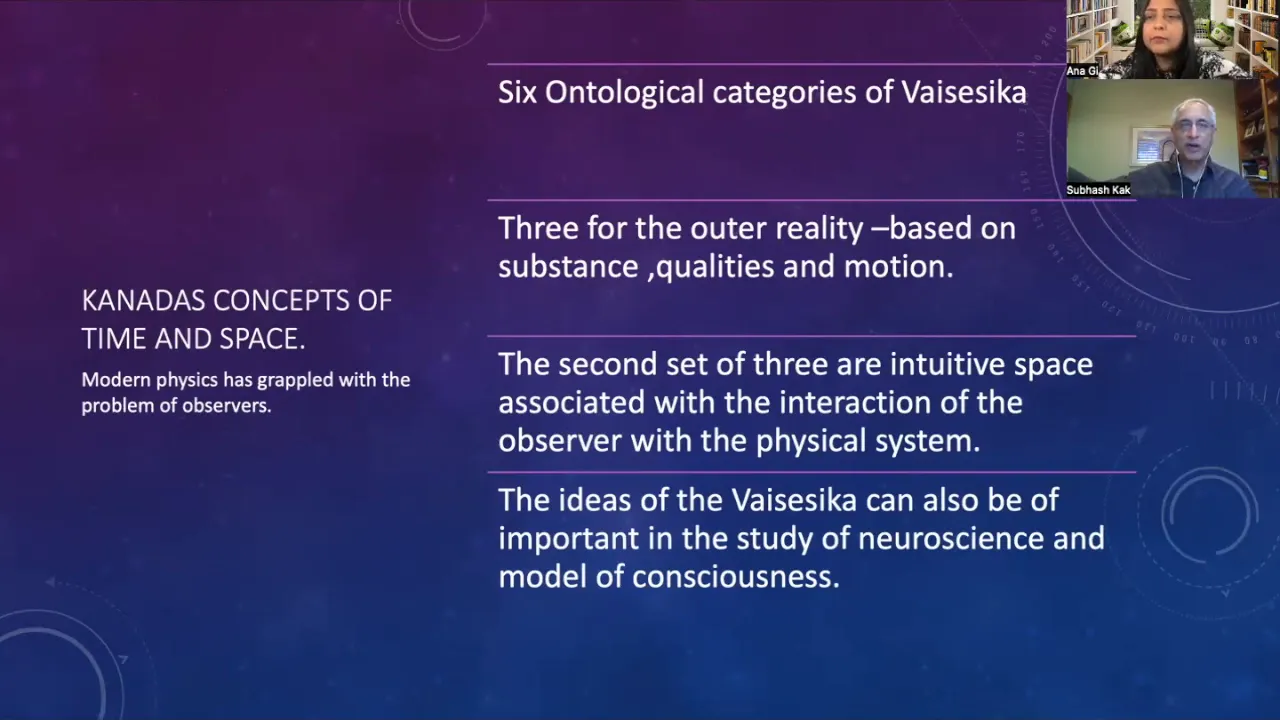
Professor Kak notes that all living beings share the same fundamental consciousness, despite differences in brain capacity or biology. This universality supports a social message of equality, transcending race, caste, or background.
Moreover, every individual has the potential to transcend their conditioned tendencies and limitations, reaching higher states of awareness or spiritual realms, metaphorically described as cities like Shambhala or Gyanganj in higher dimensions.
Neuroscience and the Vaisheshika Sutra
Remarkably, the sutra’s ideas find resonance in modern neuroscience. Professor Kak’s research identified 25 independent cognitive centers in the human brain, matching the 25 elements described in the Sankhya philosophy, closely related to Vaisheshika.
This correspondence suggests that ancient Indian thought holds valuable intuitions about the mind’s structure and function, offering insights for both laypersons and scientists seeking to understand consciousness and cognition.
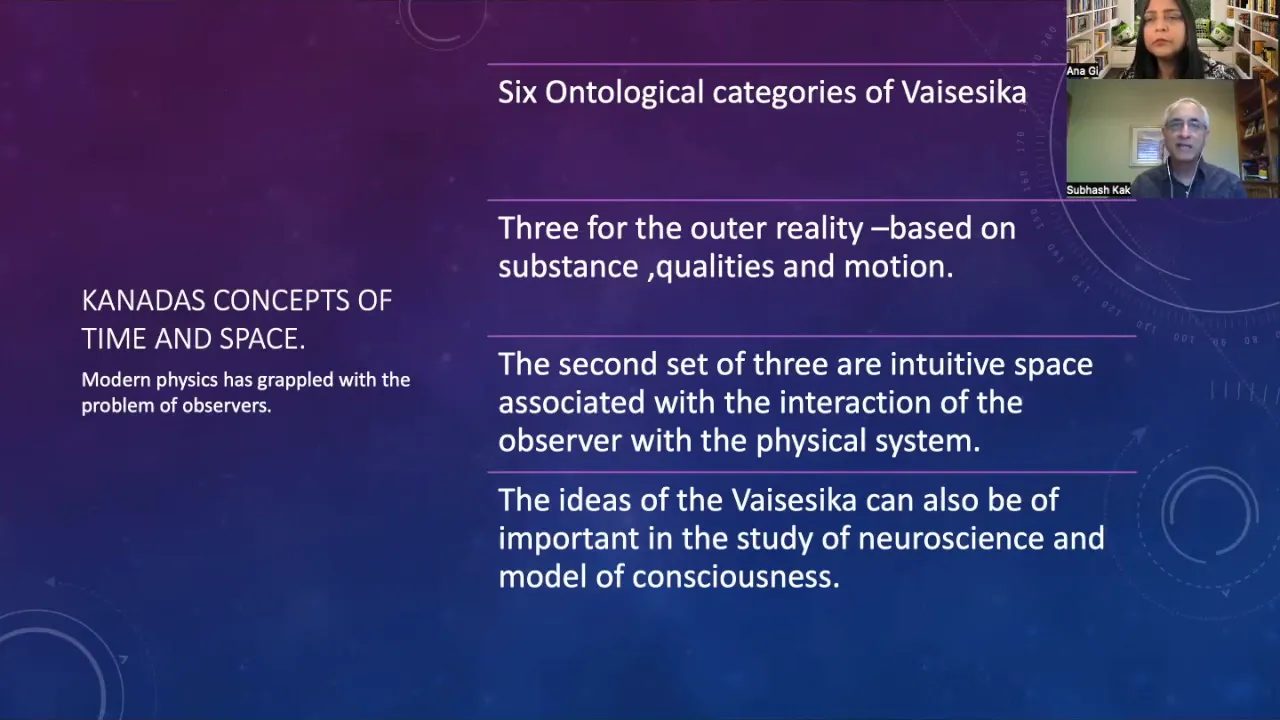
Symbolism of Shiva and the Dance of Consciousness
The cosmic dance of Shiva, or Nataraja, is a powerful symbol embodying the dynamic interplay of consciousness and matter. This symbolism is so profound that a statue of Shiva’s dance stands at CERN, the European Organization for Nuclear Research, symbolizing the dance of subatomic particles and the universe’s ongoing creation and destruction.
Shiva represents consciousness personified—auspiciousness and insight. His dance has five movements symbolizing creation, preservation, destruction, concealment, and grace, reflecting the universe’s cyclical nature.
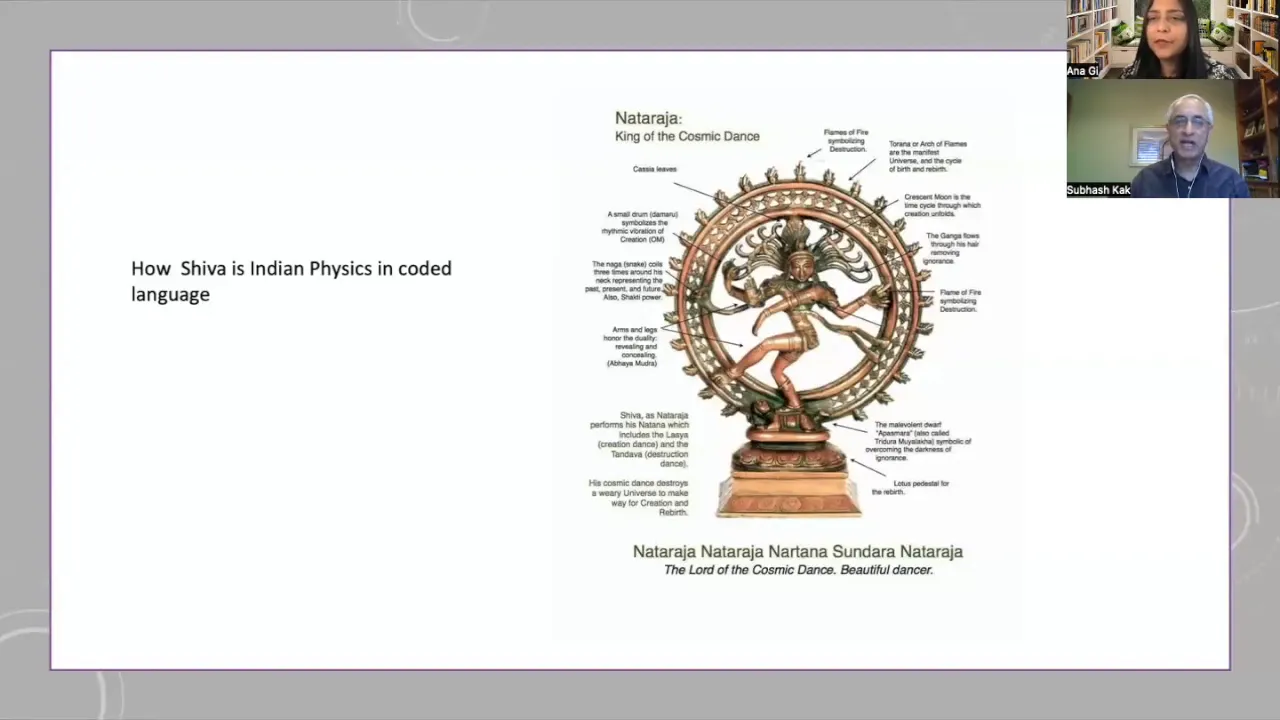
Each gesture and element in the iconography carries deep meaning:
- Abhaya Mudra: The gesture of “do not fear,” symbolizing protection and reassurance.
- Damaru: The drum representing time and the rhythm of creation.
- Apasmara: The dwarf symbolizing ignorance or forgetfulness, which Shiva’s dance overcomes.
- Moon and Ganga: Representing cosmic order and the flow of consciousness.
The dance is not static but a process of constant transformation, mirroring the dynamic nature of the universe and human thought.
Samudra Manthan: The Churning of the Ocean and the Quest for Immortality
The story of Samudra Manthan, or the churning of the ocean, is a central Hindu myth with profound philosophical significance. It depicts the collaboration and conflict between the devas (gods) and asuras (demons), symbolizing the internal struggle within each individual.
The devas and asuras agree to churn the cosmic ocean to obtain Amrit, the elixir of immortality, using Mount Mandar as the churning rod and the serpent Vasuki as the rope. However, the asuras’ pride and suspicion complicate the process, reflecting the tensions between higher and lower impulses within us.
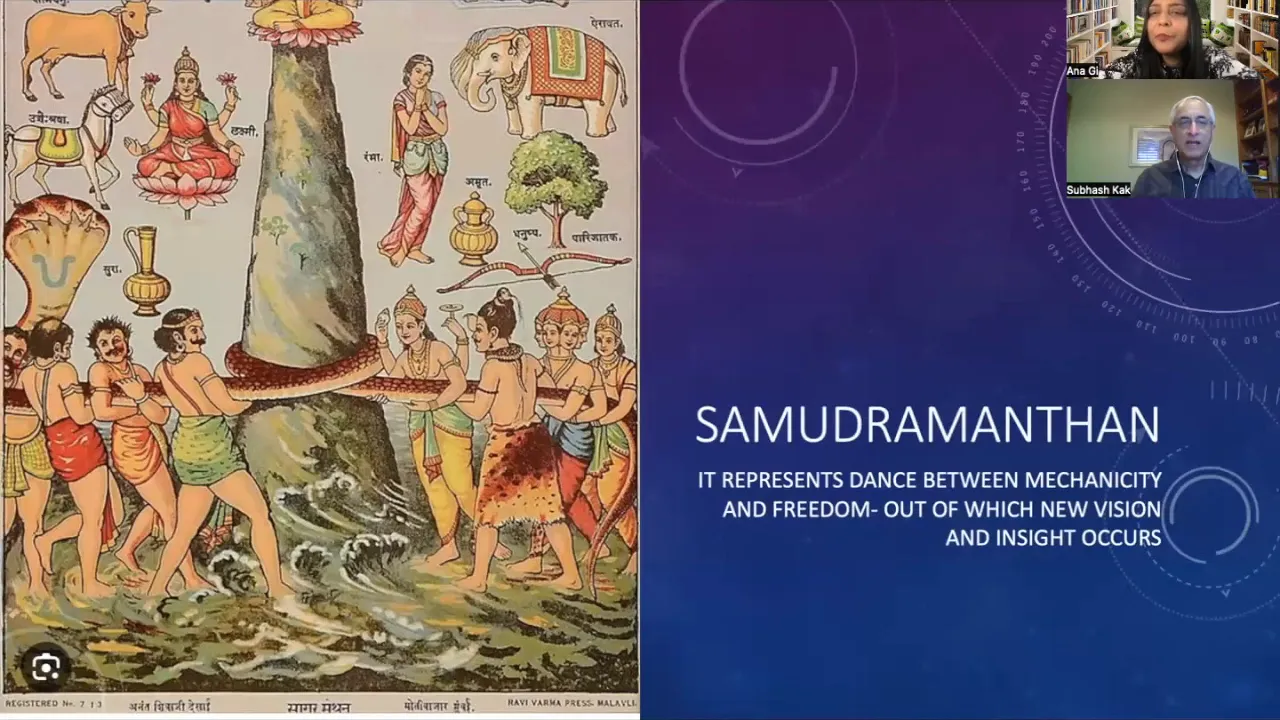
From the churning emerges poison, which Shiva consumes to save the universe, symbolizing the necessity to confront and transcend fear, especially the fear of death. Subsequently, various treasures and divine gifts appear, culminating in the emergence of Amrit.
The asuras attempt to seize the Amrit, threatening cosmic balance. Vishnu, in the form of the enchanting Mohini, tricks the asuras to ensure the devas receive the elixir, illustrating the triumph of wisdom and higher consciousness over ignorance.
The story serves as a metaphor for the spiritual journey, where the seeker must endure suffering (tapasya) and inner conflict to attain liberation and immortality.
Conclusion: The Timeless Wisdom of the Vaisheshika Sutra
The Vaisheshika sutra of Kanada, as illuminated by Professor Subhash Kak, is a treasure trove of ancient wisdom that bridges philosophy, science, and spirituality. Its insights into the nature of matter, motion, space, time, and consciousness resonate with modern scientific discoveries, while also offering profound guidance on the human experience.
This ancient text encourages us to explore beyond conventional thought, to embrace the unity of the outer universe and inner consciousness, and to seek the deeper truths that underlie existence. The sutra’s teachings remain relevant today, inspiring both scientific inquiry and spiritual growth.
Whether you are a student of physics, philosophy, or spirituality, the Vaisheshika sutra offers a rich framework to understand the cosmos and ourselves, inviting us to participate in the cosmic dance of consciousness and matter.
Frequently Asked Questions (FAQ)
What is the Vaisheshika Sutra?
The Vaisheshika sutra is an ancient Indian philosophical text attributed to the sage Kanada, dating back to around 500-600 BCE. It presents a detailed analysis of the nature of physical reality, including matter, motion, and consciousness, and outlines laws of nature that predate modern physics.
How does the Vaisheshika Sutra relate to modern science?
The sutra’s concepts of substance (dravya), properties (guna), and motion (karma) closely align with modern physics’ understanding of matter and forces. Its principles of motion anticipate Newton’s laws, and its nuanced view of space and time resonates with contemporary theories involving multiple dimensions and fractal geometry.
What are the five Mahabhutas described in the sutra?
The five Mahabhutas are fundamental elements: Prithvi (earth/solidity), Apas (water/fluidity), Tejas (fire/energy), Vayu (air/motion), and Akasha (ether/space). These elements form the building blocks of all matter and phenomena in the universe.
What is the significance of the observer in the Vaisheshika Sutra?
The sutra emphasizes the role of the observer (Purush) and distinguishes between universal and specific properties perceived by observers. This anticipates ideas in quantum mechanics where observation affects the reality perceived, highlighting the intimate link between consciousness and the physical world.
How does the Vaisheshika Sutra address consciousness?
Consciousness is considered a fundamental aspect of reality, distinct from matter but interconnected. The sutra describes an inner space of awareness and the potential for individuals to transcend conditioning, reaching higher states of consciousness and insight.
What lessons does the Samudra Manthan story teach?
The story symbolizes the internal spiritual struggle between higher and lower impulses within each person. It teaches that through perseverance, facing fears, and transcending ego, one can attain spiritual treasures and immortality, representing liberation and enlightenment.
Is there scientific evidence supporting the sutra’s ideas about space and time?
Modern research in physics and mathematics suggests that space may have fractal or fractional dimensions, a concept hinted at in the sutra’s distinction between Akasha (space) and Dik (direction). These ideas are still evolving but show intriguing parallels to ancient Indian philosophy.
Where can I learn more about the Vaisheshika Sutra and Professor Subhash Kak’s work?
Professor Kak has authored numerous books and papers on the subject, including his translation and commentary on the Vaisheshika sutra. His works explore the intersections of ancient Indian philosophy, modern science, and consciousness studies, available through academic publications and online platforms.